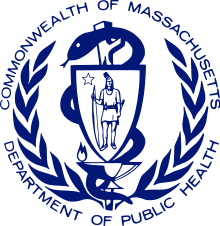Proposed DPH Pest Control Requirements Are Confusing, Costly and Burdensome for Condos
By Matthew Gaines and John Shaffer
Anyone who tracks legislation and regulations affecting condominiums has to wonder if lawmakers and regulators understand what condos are and how they operate. Proposed revisions to the state Sanitary Code demonstrate once again that they do not. The Department of Public Health wants to update the existing code ─ unquestionably a reasonable undertaking, both necessary and long overdue. But provisions aimed at controlling pests in multi-family housing would cause confusion in the condominium industry and impose costly and unnecessary administrative burdens on condo associations.The proposed regulation (and it is important to emphasize, this is just a proposal that has not yet been adopted) would require owners of properties with four units or more to implement an “Integrated Pest Management” (IPM) plan that would include on-site inspections of the units at least every four months, the results of which “must be documented.” The stated goals of this requirement, outlined in a DPH summary, include eliminating “entry points” for pests, ensuring that residences are maintained “in a clean and sanitary manner” to reduce the risk of pest infestations, and “monitor[ing] for the presence of pests.”No one likes pests and it is certainly true, as the DPH notes in its summary, that a pest infestation in one unit can spread to others. But for condominiums, these regulations are far more problematic than the pests they target. CAI-New England’s Massachusetts Legislative Action Committee (LAC) highlighted those problems in comments it submitted to DPH, primary among them: The department’s failure to distinguish between owners of rental properties, who control individual rental units as well as common areas in those buildings, and condominium associations, in which owners control their units and boards, which are not synonymous with landlords (though DPH seems to assume they are) control and have responsibility only for common areas.
The Department of Public Health wants to update the existing code ─ unquestionably a reasonable undertaking, both necessary and long overdue. But provisions aimed at controlling pests in multi-family housing would cause confusion in the condominium industry and impose costly and unnecessary administrative burdens on condo associations.The proposed regulation (and it is important to emphasize, this is just a proposal that has not yet been adopted) would require owners of properties with four units or more to implement an “Integrated Pest Management” (IPM) plan that would include on-site inspections of the units at least every four months, the results of which “must be documented.” The stated goals of this requirement, outlined in a DPH summary, include eliminating “entry points” for pests, ensuring that residences are maintained “in a clean and sanitary manner” to reduce the risk of pest infestations, and “monitor[ing] for the presence of pests.”No one likes pests and it is certainly true, as the DPH notes in its summary, that a pest infestation in one unit can spread to others. But for condominiums, these regulations are far more problematic than the pests they target. CAI-New England’s Massachusetts Legislative Action Committee (LAC) highlighted those problems in comments it submitted to DPH, primary among them: The department’s failure to distinguish between owners of rental properties, who control individual rental units as well as common areas in those buildings, and condominium associations, in which owners control their units and boards, which are not synonymous with landlords (though DPH seems to assume they are) control and have responsibility only for common areas.
 Ambiguity and Confusion
Ambiguity and Confusion
“When drafting regulations, you cannot simply lump condominiums into the same category as apartments,” the LAC notes in its comment letter. “Doing so creates ambiguity and confusion, which inevitably leads to litigation. Unfortunately, in multiple instances, that is exactly what the drafters have done here.”In addition to ignoring the differences between condominiums and rental properties, the regulations provide multiple definitions of an “owner,” making it impossible to discern clearly who in a condominium community would be responsible for developing the pest management plan and conducting the required inspections. “Is it the owner of the individual units who needs to come up with the IPM plan for their units, or is the ‘owner’ the trustees of the condominium association?” the LAC comment letter asks. “If it is the latter, are the trustees only responsible for coming up with an IPM plan for the common areas, or must the plan be [for] the units as well?”That is one of many areas in which the lack of clarity in the drafting creates troubling ambiguity in the proposed regulations.The pest control requirements are not only confusing; they are unwieldy and potentially very costly, especially for smaller condo communities that aren’t professionally managed. Requiring these communities to conduct quarterly inspections, especially if they’ve never had a pest problem, adds an administrative burden and increases costs “for no reason,” the LAC points out. Larger communities are more likely to have professional managers who can handle the inspection tasks, but those tasks are outside the scope of the manager’s defined duties. The manager will no doubt charge more for this extra work, in addition to the fee charged by the pest control company performing the inspection. The added expense will increase the association’s operating costs and the monthly fees owners must pay to cover them.
Cost Concerns
 “Condominiums are the last bastion of affordable housing in Massachusetts,” the LAC comment letter notes. Recognizing that, “policymakers should not impose unnecessary regulations that will only add to the monthly condominium fees and make condominium living unaffordable.”The LAC suggests, among other changes, requiring pest inspections only if there has been a previous pest problem, and then only for a limited time (the committee suggests a year) after that. “It is not necessary to require quarterly inspections in perpetuity for a building that is pest free,” the comment letter notes.Although the LAC focused primarily on the pest control provisions in the Sanitary Code overhaul, it noted problems in other areas, most resulting, like the problems with the pest control requirements, from a hazy understanding of condominiums and murky language related to it. One example: Provisions dealing with maintenance obligations in multi-family properties specify that “the owner is responsible for providing all maintenance, repairs [and]equipment necessary” to comply with the housing code. But the definition of owner includes, in addition to the owner of a condominium unit, the trustees of a condominium association.“If you substitute [trustee] for owner,” the LAC notes, “the regulations make the trustees responsible for all maintenance, including within individual units. This is contrary to every single set of documents ever drafted,” all of which make unit owners responsible for maintaining their units and trustees responsible for maintaining the common areas.Adding language making it clear that the division of responsibilities outlined in condominium documents would trump the DPH regulations would take care of this problem, the LAC notes, but without that clarification, “the regulations will inadvertently create massive confusion.”
“Condominiums are the last bastion of affordable housing in Massachusetts,” the LAC comment letter notes. Recognizing that, “policymakers should not impose unnecessary regulations that will only add to the monthly condominium fees and make condominium living unaffordable.”The LAC suggests, among other changes, requiring pest inspections only if there has been a previous pest problem, and then only for a limited time (the committee suggests a year) after that. “It is not necessary to require quarterly inspections in perpetuity for a building that is pest free,” the comment letter notes.Although the LAC focused primarily on the pest control provisions in the Sanitary Code overhaul, it noted problems in other areas, most resulting, like the problems with the pest control requirements, from a hazy understanding of condominiums and murky language related to it. One example: Provisions dealing with maintenance obligations in multi-family properties specify that “the owner is responsible for providing all maintenance, repairs [and]equipment necessary” to comply with the housing code. But the definition of owner includes, in addition to the owner of a condominium unit, the trustees of a condominium association.“If you substitute [trustee] for owner,” the LAC notes, “the regulations make the trustees responsible for all maintenance, including within individual units. This is contrary to every single set of documents ever drafted,” all of which make unit owners responsible for maintaining their units and trustees responsible for maintaining the common areas.Adding language making it clear that the division of responsibilities outlined in condominium documents would trump the DPH regulations would take care of this problem, the LAC notes, but without that clarification, “the regulations will inadvertently create massive confusion.” CAI-NE is by no means the only organization concerned about the Sanitary Code revisions. A number of real estate groups testified at a hearing in September and have submitted comments detailing a range of problems. The Greater Boston Real Estate Board, for example, inserted comments or suggested changes on virtually every page of the 45-page proposal.Presumably, the DPH will revise the proposal to reflect some of these concerns, if not all of them. Our hope is that the pest control language as it applies to condominium associations, will disappear. We will monitor the approval process and report back once the DPH approves and implements the final regulations.
CAI-NE is by no means the only organization concerned about the Sanitary Code revisions. A number of real estate groups testified at a hearing in September and have submitted comments detailing a range of problems. The Greater Boston Real Estate Board, for example, inserted comments or suggested changes on virtually every page of the 45-page proposal.Presumably, the DPH will revise the proposal to reflect some of these concerns, if not all of them. Our hope is that the pest control language as it applies to condominium associations, will disappear. We will monitor the approval process and report back once the DPH approves and implements the final regulations.
